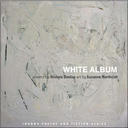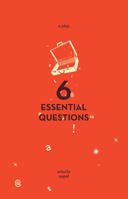
Language Arts & Disciplines Composition & Creative Writing
Writing Creative Writing
Essays from the Field
- Publisher
- Dundurn Press
- Initial publish date
- May 2018
- Category
- Composition & Creative Writing, Language Arts, Writing Skills
-
Paperback / softback
- ISBN
- 9781459741690
- Publish Date
- May 2018
- List Price
- $28.99
-
eBook
- ISBN
- 9781459741713
- Publish Date
- May 2018
- List Price
- $14.99
Add it to your shelf
Where to buy it
Description
Essential and engaging essays about the joys and challenges of creative writing and teaching creative writing by a host of Canada’s leading writers.
Writing Creative Writing is filled with thoughtful and entertaining essays on the joys and challenges of creative writing, the complexities of the creative writing classroom, the place of writing programs in the twenty-first century, and exciting strategies and exercises for writing and teaching different genres. Written by a host of Canada’s leading writers, including Christian Bök, Catherine Bush, Suzette Mayr, Yvette Nolan, Judith Thompson, and thom vernon, this book is the first of its kind and destined to be a milestone for every creative writing student, teacher, aspirant, and professional.
About the authors
Rishma Dunlop was born in India and grew up in Beaconsfield, Quebec. She has published poetry, literary essays and translations, as well as edited anthologies. Lover Through Departure is her fifth book of poems. She has received awards, fellowships and prizes for her writing, including the Emily Dickinson Prize for Poetry and a Fulbright Research Chair in Creative Writing. In 2011, she was elected as Fellow of the Royal Society of Canada, Academy of Arts and Humanities. She lives in Toronto where she teaches at York University.
Daniel Scott Tysdal is the author of two previous books of poetry, The Mourner's Book of Albums and Predicting the Next Big Advertising Breakthrough Using a Potentially Dangerous Method, winner of the ReLit Award for Poetry, the Anne Szumigalski Poetry Award, and the John V. Hicks Award. Tysdal's poems have also appeared in numerous literary journals and anthologies. His book The Writing Moment: A Practical Guide to Creating Poems was recently published by Oxford University Press. He teaches English at the University of Toronto Scarborough.
Dr. Priscila Uppal is a Toronto poet, fiction writer and York University Professor. Among her publications are nine collections of poetry, most recently, Ontological Necessities (2006; shortlisted for the Griffin Poetry Prize), Traumatology (2010), Successful Tragedies: Poems 1998-2010 (Bloodaxe Books, U.K.), and Winter Sport: Poems and Summer Sport: Poems; the critically-acclaimed novels The Divine Economy of Salvation (2002) and To Whom It May Concern (2009); the study We Are What We Mourn: The Contemporary English-Canadian Elegy (2009), and the memoir Projection: Encounters with My Runaway Mother (2013; shortlisted for the Hilary Weston Prize and the Governor General's Award). Her work has been published internationally and translated into Croatian, Dutch, French, Greek, Italian, Korean and Latvian. She was the first-ever poet-in-residence for Canadian Athletes Now during the 2010 Vancouver and 2012 London Olympic and Paralympic games as well as the Roger's Cup Tennis Tournament in 2011. Six Essential Questions, her first play, had its World Premiere as part of the Factory Theatre 2013-2014 season, and will be published by Playwrights Canada Press in 2015. Time Out London recently dubbed her ÒCanada's coolest poet.' For more information visit priscilauppal.ca
Excerpt: Writing Creative Writing: Essays from the Field (edited by Rishma Dunlop, Daniel Tysdal & Priscila Uppal)
DRAFT
Raid, Warp, Push: The Pedagogy of Poetic Form
Wanda Campbell
In the MTV television show Pimp My Ride, people convince the host that their dilapidated old cars should be whisked off to a custom body shop to be restored, personalized, and generally jazzed up with new paint and shiny accessories ranging from the practical to the outrageous. The verb pimp means “to customize or modify so as to be more stylish, ostentatious, or flashy” [OED] in relation to the conspicuous wealth associated with pimps but may also be connected to the French verb pimper meaning “to adorn or attire.” So why, a century after Ezra Pound’s Imagist Manifesto called for “direct treatment,” “absolutely no word that does not contribute” and “the musical phrase [over] the metronome” (3) would a poet want to adorn a poem with rhyme, meter, or any number of complex patterns and embellishments? The analogy between pimping a ride and pimping a poem may be imperfect in that the former means taking an old car and making it new and the latter appears to mean taking a new thought and making it old, and yet the enduring desire to trick out the unvarnished image with inherited chrome challenges us to reconsider the value of writing in fixed forms.
When I enrolled in my first creative writing class as an undergraduate, convinced that formal rhyming poetry was a thing of the past, imagine my surprise when our professor handed us a list of traditional forms to tackle throughout the semester. I soon realized that writing in form is not about afterthought and adornment, but rather about forethought and fusion. It is not about the outside in, but rather the inside out. As Mark Strand argues, “all poetry is formal in that it exists within limits, limits that are either inherited by tradition or limits that language itself imposes” (69).
Though I rarely still write in the fixed forms I attempted in that first creative writing course, it was essential to convey my craft “into its own roots” as Walt Whitman puts it in his discussion of “the profit of rhyme” in his 1855 “Preface” to Leaves of Grass (11). Because those early efforts still bear subtle fruit in my own work, I have made writing in traditional forms a part of my creative writing pedagogy for over twenty years and though students are not always satisfied with the product they are, without exception, positive about the process. The student feedback I have incorporated into the discussion that follows, confirms that students agree that writing in traditional forms is a vital and rewarding component of a poetic apprenticeship. According to Annie Finch, one of New Formalism’s most eloquent advocates,“aspiring poets and creative writing students need to learn the full range of English prosodic possibilities. They will gain fluency and resourcefulness as writers, flexibility and sophistication as readers, from learning to hear the many different metrical patterns in English and the rhythmical variation on those patterns” (121).
Dana Gioia’s “My Confessional Sestina” begins with the line “Let me confess. I’m sick of these sestinas / written by youngsters in poetry workshops…” The practice of forcing creative writing students to write in traditional patterns is often mocked and rightly so. Former student now published poet Christine McNair explains why it can be risky, even dangerous: “Dangerous if students are only taught with classic examples. It can change their voice and make them creaky-sounding, often Victorian. Dangerous if there’s no exposure to other poetics, hybrids, mutant forms (those who have warped the form/broken the rules/re-written them. Dangerous if students are taught that form work is the only acceptable way of writing poetry and that anything freeform or different is incompetent or lazy.” Richard Wilbur goes as far as to say “Disgusting idea that someone should sit down with a determination to write in some form or other before he conceives of what the hell he’s going to say” (Cummins 133), and yet throughout the last century and into this one, there have been many poets who have returned to fixed forms with memorable results. By encouraging students to explore the full range of poetic possibilities – to invent, re-invent and experiment – we seek a lively dialogue between the best of past and present. This is not about nostalgia but about making it new. Ken Babstock argues, “At times this seems to me to be a function of being a Canadian poet; performing these backward raids into larger, more powerful traditions; warping them slightly to suit experience and vernacular, and pushing them up against asymmetrical subject matter.” Babstock’s dynamic troika of verbs – raid, warp, push – provides a useful way to incorporate fixed form into poetic pedagogy in a contemporary and kinetic way.
Raid: Continuity
The notion of a raid suggests an inroad or incursion made by those who are outside. It also suggests there is treasure, something we want and need, on the other side of the wall. This is not mere guerilla warfare but rather taking advantage of our freedom to glean the best from the fiefdom. And now, for inhabitants of the global village, both past and present traditions are wider and richer than they once were in that we can draw on not only the established forms of Europe but also those of the whole world. Former student Tegan Zimmerman argues that working with fixed forms “can teach the historical ‘progression’ of poetry’s history and movements so the student has a solid understanding” of the roots of contemporary poetry. Though it seems to be the goal of each generation to break with the past, the benefits of continuity should not be underestimated. Mary Oliver reminds us that “Five hundred years and more of such labor, such choice thought within choice expression, lies within the realm of metrical poetry. Without it, one is uneducated, and one is mentally poor.” (ix)
Through these backward raids, we become connected with the community of poets that has come before us, the strong shoulders upon which we stand, with the treasures of past poetic practice, and even with the fundamental human rhythms of our own bodies. In his Preface to the Lyrical Ballads (1800), William Wordsworth speaks of the “complex feeling of delight” generated by “the music of harmonious metrical language, the sense of difficulty overcome” (317) and nearly two centuries later, Frederick Turner and Ernst Pöppel argue that human information processing is among other things, rhythmic, reflexive, and hemispherically specialized: “Poetry, as we have seen, enforces cooperation between left-brain temporal organization and right-brain spatial organization and helps to bring about that integrated stereoscopic view that we call true understanding” (247). Even Keith Mallard, who questions some of their conclusions and the science behind them, admits that the article “The Neural Lyre: Poetic Meter, the Brain, and Time” is “a fascinating read” (58). Turner and Pöppel suggest that ‘our species’ special adaption may in fact be to expect more order and meaning in the world than it can deliver” (248) and that our efforts to seek them in poetry and elsewhere may be one of our most effective survival strategies. “We now know more of the linkages which connect any art to human function,” writes Louise Bogan, “and this knowledge should make us take more pleasure, rather than less, in form” (213). Former student Jen Huizen puts it this way, “These traditional forms still exist for a reason. They appeal on some level to our mind, how we perceive words, or quite possibly simply stimulate distant memories of more ancient days, when the primary ways of obtaining knowledge was through oral tradition.”
Editorial Reviews
Writing Creative Writing is the first Canadian anthology to bring together such a wide-ranging collection of voices on teaching creative writing. This is a book for everyone interested in how we learn to write — students, writers, administrators and creative writing instructors will all find sparkling insights here into the diverse strategies writers use to help each other get better at the craft.
Sonnet L'Abbé
This vital compendium of contemporary writings on pedagogy in the creative writing classroom is essentially a heavy tool belt that will equip anyone for teaching in any genre and at every stage of their career
Natalee Caple
What a marvelous compendium of ideas, approaches and practices to help guide and reassure us as writers. This book is a must for Canadian writers, aspiring and established.
Joseph Kertes








